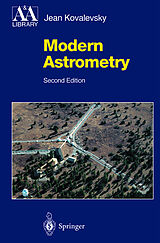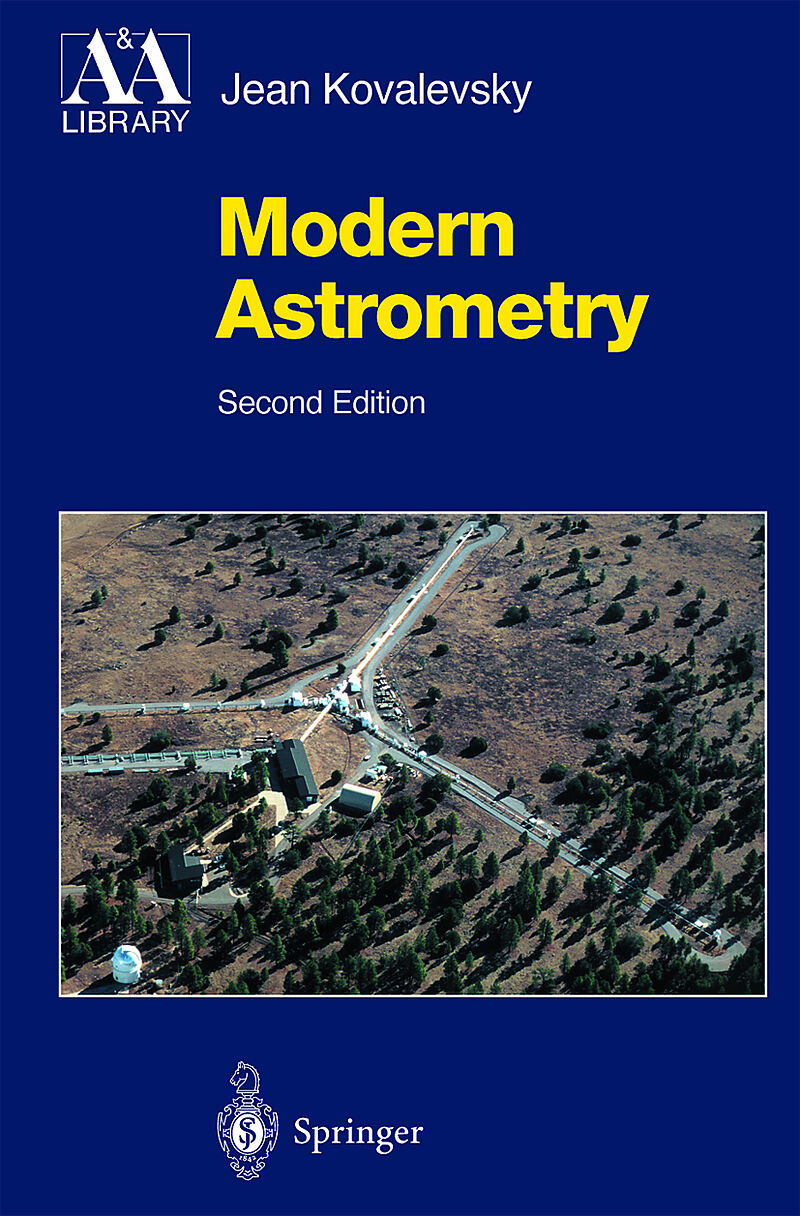Modern Astrometry
Einband:
Fester Einband
EAN:
9783540423805
Untertitel:
Astronomy and Astrophysics Library
Autor:
Jean Kovalevsky
Herausgeber:
Springer Berlin Heidelberg
Auflage:
2nd ed. 2002
Anzahl Seiten:
396
Erscheinungsdatum:
22.01.2002
ISBN:
354042380X
This book is presently the standard reference for astrometry especially for students.
On the occasion ofthe second edition ofthe book, it appeared necessary to up date information that was already seven years old. Astrometry has recorded tremendous advances during these last years, so that, in addition to cor recting identified errors and misprints, there are many major modifications. Among the events that forced me to modify significantly the contents of the book, the most important are the release of the Hipparcos and Tycho cata logues, the introduction of CCD astrometry, the decision of the International Astronomical Union to adopt a new celestial reference frame, the dramatic improvement of accurate time and frequency standards, the decision taken by space agencies to prepare several new space astrometry satellites and the development of optical interferometry. The description and the consequences of these events have been included in this edition. One of them is that a mi crosecond of arc or microarcsecond (uas) has become a widely used unit. On the contrary, the result was also that the importance of some in struments such as astrolabes or transit circles has decreased. However, I left but because their description unchanged, not only for their historical interest, newer techniques often use similar data reduction methods so that one can refer to them. Conversely, some methods or instruments have evolved and new information is included. Finally, many new references were added to the original list.
This book is presently the standard reference for astrometry especially for students Includes supplementary material: sn.pub/extras
Klappentext
The book is an introduction to practical astrometry, dealing with the determination of positions, motions, distances and dimensions of celestial bodies ranging from quasars to artificial satellites. The main part is devoted to the description of instruments and observing techniques, and also includes the basic properties of optical instruments and a detailed description of the atmospheric effects on observations. A brief summary of the main phenomena in positional astronomy and of data treatment is given. Although classical astrometric methods are described, emphasis is put on new, more precise techniques such as CCD, optical and radio interferometry, space astrometry, etc. For this 2nd edition, the release of the Hipparcos and Tycho catalogs, the rise in CCD astrometry and the adoption of a new celestial reference frame by the IAU led to a significant modification of the text. And, especially, the outlook for astrometry has been completely rewritten.
Zusammenfassung
On the occasion ofthe second edition ofthe book, it appeared necessary to up date information that was already seven years old. Astrometry has recorded tremendous advances during these last years, so that, in addition to cor recting identified errors and misprints, there are many major modifications. Among the events that forced me to modify significantly the contents of the book, the most important are the release of the Hipparcos and Tycho cata logues, the introduction of CCD astrometry, the decision of the International Astronomical Union to adopt a new celestial reference frame, the dramatic improvement of accurate time and frequency standards, the decision taken by space agencies to prepare several new space astrometry satellites and the development of optical interferometry. The description and the consequences of these events have been included in this edition. One of them is that a mi crosecond of arc or microarcsecond (uas) has become a widely used unit. On the contrary, the result was also that the importance of some in struments such as astrolabes or transit circles has decreased. However, I left but because their description unchanged, not only for their historical interest, newer techniques often use similar data reduction methods so that one can refer to them. Conversely, some methods or instruments have evolved and new information is included. Finally, many new references were added to the original list.
Inhalt
1 Presentation of Astrometry.- 2 Image Formation.- 3 Atmospheric Effects on Image Formation.- 4 Reduction of Observations.- 5 Small-Field Astrometry.- 6 Meridian Circles.- 7 Equal Altitude Instruments.- 8 Hipparcos.- 9 Very Small Field Astrometry.- 10 Phase Interferometry.- 11 Timing Techniques.- 12 Future of Astrometry.- References.

Leider konnten wir für diesen Artikel keine Preise ermitteln ...
billigbuch.ch sucht jetzt für Sie die besten Angebote ...
Die aktuellen Verkaufspreise von 6 Onlineshops werden in Realtime abgefragt.
Sie können das gewünschte Produkt anschliessend direkt beim Anbieter Ihrer Wahl bestellen.
Loading...
Die aktuellen Verkaufspreise von 6 Onlineshops werden in Realtime abgefragt.
Sie können das gewünschte Produkt anschliessend direkt beim Anbieter Ihrer Wahl bestellen.
| # | Onlineshop | Preis CHF | Versand CHF | Total CHF | ||
|---|---|---|---|---|---|---|
| 1 | Seller | 0.00 | 0.00 | 0.00 |
